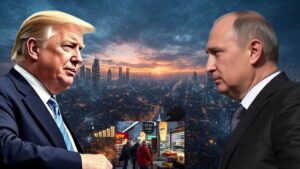Elon Musk’s recent announcement to pause the construction of Tesla’s Gigafactory in Monterrey, Mexico, has stirred significant discussion in the automotive and financial sectors. This decision, made during Tesla’s earnings call on July 23, 2024, is primarily influenced by the political landscape surrounding the upcoming U.S. presidential election and the potential economic implications of proposed tariffs by former President Donald Trump.
Tesla Gigafactory in Mexico on Pause
#1
Background of the Gigafactory Project
https://youtu.be/ubsQp1o7A28?si=dl-_z4g_AM_oz-g_ Initially announced in February 2023, the Gigafactory was set to be a significant investment for Tesla, with plans to produce a new generation of electric vehicles (EVs). The factory, located in Nuevo León, was expected to begin operations by 2026, bolstered by incentives from the Mexican government. However, the project has faced multiple delays, attributed to various factors, including high-interest rates and logistical challenges in the region.
#2
Political Uncertainty
One of the primary reasons for the pause is the political climate in the United States. Former President Donald Trump has pledged to impose heavy tariffs on vehicles manufactured in Mexico. During the earnings call, Musk stated, "It doesn’t make sense to invest heavily in Mexico if that is going to be the case." This statement underscores the potential financial burden that such tariffs could impose on Tesla's operations.
#3
Economic Factors
In addition to political uncertainties, Musk highlighted broader economic concerns, particularly the impact of rising interest rates on vehicle sales. As interest rates increase, the cost of financing a new vehicle rises, making it more challenging for consumers to afford new cars. This, in turn, affects overall demand in the automotive market.
#4
Focus on Existing Facilities
Tesla's existing factories are undergoing expansions to accommodate increased production. The Texas Gigafactory, in particular, is seen as a critical hub for Tesla's future products. Musk's emphasis on this facility indicates a strategic pivot to ensure that Tesla remains competitive in the rapidly evolving EV market.
Strategic Adjustments
In light of the pause, Tesla is redirecting its focus to increasing production capacity at its existing factories, particularly in Texas. Musk confirmed that upcoming products, such as the Robotaxi and the Optimus humanoid robot, will be produced at the Texas facility instead of the delayed Mexican plant. This shift is part of Tesla's strategy to maintain growth and meet production targets despite the setbacks in Mexico.Focus on Existing Facilities
Tesla's existing factories are undergoing expansions to accommodate increased production. The Texas Gigafactory, in particular, is seen as a critical hub for Tesla's future products. Musk's emphasis on this facility indicates a strategic pivot to ensure that Tesla remains competitive in the rapidly evolving EV market.
#5
ding to increased vehicle prices and reduced competitiveness in the U.S. market.
Competitors' Reactions
Competitors in the EV space are closely monitoring Tesla's moves. Companies like Ford, General Motors, and Rivian may need to reassess their strategies regarding production locations and pricing structures in light of potential tariff changes. The pause in the Monterrey project could also open opportunities for these companies to capture market share while Tesla navigates its challenges.
Industry Impact
Musk's decision to pause the Gigafactory project is not just a Tesla issue; it has broader implications for the automotive industry and the EV market as a whole. The potential tariffs could affect various automakers that rely on production in Mexico, leading to increased vehicle prices and reduced competitiveness in the U.S. market.
Competitors' Reactions
Competitors in the EV space are closely monitoring Tesla's moves. Companies like Ford, General Motors, and Rivian may need to reassess their strategies regarding production locations and pricing structures in light of potential tariff changes. The pause in the Monterrey project could also open opportunities for these companies to capture market share while Tesla navigates its challenges.
#6
As the U.S. election approaches, the automotive industry will be watching closely to see how these dynamics unfold. For Tesla, the focus will remain on leveraging existing facilities to meet production targets while navigating the complexities of the current economic landscape. The future of the Gigafactory in Monterrey may be uncertain, but Tesla's commitment to innovation and expansion in the EV market remains steadfast.
Conclusion
Elon Musk's decision to pause the construction of the Gigafactory in Monterrey, Mexico, reflects immediate concerns regarding tariffs and economic conditions. While the pause may be seen as a setback, Musk's long-term vision for Tesla's growth in Mexico remains intact, contingent on future developments in both the political and economic arenas.As the U.S. election approaches, the automotive industry will be watching closely to see how these dynamics unfold. For Tesla, the focus will remain on leveraging existing facilities to meet production targets while navigating the complexities of the current economic landscape. The future of the Gigafactory in Monterrey may be uncertain, but Tesla's commitment to innovation and expansion in the EV market remains steadfast.







